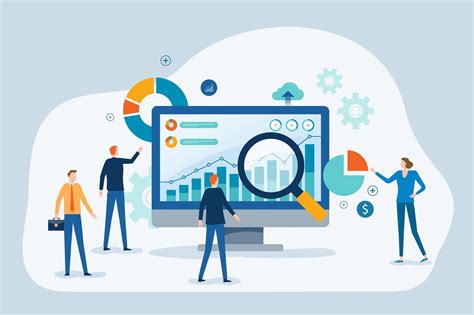
Welcome to the ultimate beginner’s guide to on-page SEO! Whether you’re new to search engine optimization or looking to enhance your website’s performance, understanding the essentials of on-page SEO is a crucial first step. This comprehensive guide will show you the strategies and tools you need to optimize your website’s content, structure, and user experience for better search rankings and visibility.
What is On-Page SEO?
On-page SEO is the process of optimizing individual web pages to rank higher in search engine results and attract more targeted traffic. Unlike off-page SEO, which focuses on external factors like backlinks, on-page SEO involves refining the elements within your website such as content, HTML tags, and images.
Key Benefits of On-Page SEO
- Improves website visibility on search engine result pages (SERPs).
- Attract highly relevant and qualified organic traffic.
- Enhances user experience through well-structured content.
- Builds a strong foundation for long-term SEO success.
Core Elements of On-Page SEO
- Keyword research and placement
- High-quality, engaging content
- Meta tag optimization
- Structured heading tags
- Image optimization
- SEO-friendly URL structure
- Effective internal linking strategies
Step-by-Step Guide to On-Page SEO
1. Keyword Research and Optimization
Conducting keyword research is the cornerstone of any effective on-page SEO strategy. Use tools like Google Keyword Planner or SEMrush to find keywords that are relevant to your target audience. Aim for a mix of high-volume, low-competition keywords and long-tail keywords to maximize your chances of ranking.
Actionable Tips:
- Include target keywords naturally in the page’s title, headings, and throughout the content.
- Focus on user intent—what are people searching for when they land on your page?
- Avoid keyword stuffing—search engines will penalize over-optimized content.
2. High-Quality Content Creation
Content is king. Your content should provide value by answering your audience’s questions and solving their problems. High-quality content is not only engaging and informative but also helps your website rank better in search results.
Tips to Create Stellar Content:
- Write in-depth articles that provide actionable insights.
- Break content into short paragraphs to enhance readability.
- Incorporate storytelling, examples, and data to keep readers engaged.
Pro Tip: Consider offering a free downloadable resource, such as a checklist or workbook, to add value for your audience while capturing leads.
3. Meta Tag Optimization
Meta tags, including the title tag and meta description, are essential for telling search engines (and users!) what your page is about. These tags should be concise, keyword-rich, and enticing.
Best Practices:
- Keep the title tag under 60 characters and include your primary keyword.
- Write compelling meta descriptions under 160 characters that encourage clicks.
- Add target keywords and semantic variations naturally within the meta tags.
Example Meta Title: “Beginner’s Guide to On-Page SEO: Step-by-Step Tips for 2023”
Example Meta Description: “Learn how to master on-page SEO with this beginner-friendly guide! Get tips on keywords, meta tags, content creation, and more for higher rankings.”
4. Heading Tag Optimization
Search engines use heading tags (H1, H2, H3, etc.) to understand the structure and relevance of your content. Using clear, keyword-rich headings improves your content’s readability and boosts your SEO performance.
Quick Tips:
- Use only one
H1tag per page and make it descriptive. - Organize the rest of the content into
H2andH3subheadings. - Include keywords naturally in your headings, but don’t force them.
5. Image Optimization
Images can greatly improve user engagement but must be optimized to avoid dragging down page speed, which is an important ranking factor.
How to Optimize Images for SEO:
- Keep image file sizes small (under 100KB) by compressing them with tools like TinyPNG.
- Use descriptive, keyword-rich filenames (e.g., “on-page-seo-guide.png”).
- Add alt-text to each image to improve accessibility and help search engines understand what the image depicts.
Example Alt Text: “Step-by-step guide to optimizing on-page SEO strategies in 2023.”
6. Internal Linking
Internal links connect different pages of your website, providing a better user experience and helping search engines crawl your site effectively. By building an interconnected web of relevant content, you can guide visitors to explore more pages and distribute link authority.
Internal Linking Suggestions:
- Link to related articles on your website using descriptive anchor texts (e.g., “Learn more about off-page SEO”).
- Focus on building a hierarchy of cornerstone and supporting content.
FAQs About On-Page SEO
Q: How often should I update my on-page SEO?
A: Regular updates are essential to staying competitive. Audit your content and SEO strategy every few months to ensure your keywords, meta tags, and content remain up-to-date with current search trends and algorithm changes.
Q: Can on-page SEO alone improve my rankings?
A: While on-page SEO is critical, combining it with off-page SEO (e.g., link building, social signals) will significantly enhance your rankings. Both strategies work hand-in-hand to improve your website’s authority and visibility.
Conclusion
You’ve now mastered the fundamentals of on-page SEO! By implementing the strategies outlined in this guide, you’ll be on your way to improving your website’s search rankings and attracting more organic visitors. On-page SEO is an ongoing process, so continue optimizing and adapting as search engine algorithms evolve.
Ready to boost your rankings? Start following these tips today, and don’t forget to track your progress with tools like Google Analytics and Search Console. Let’s make your website a search engine favorite!
